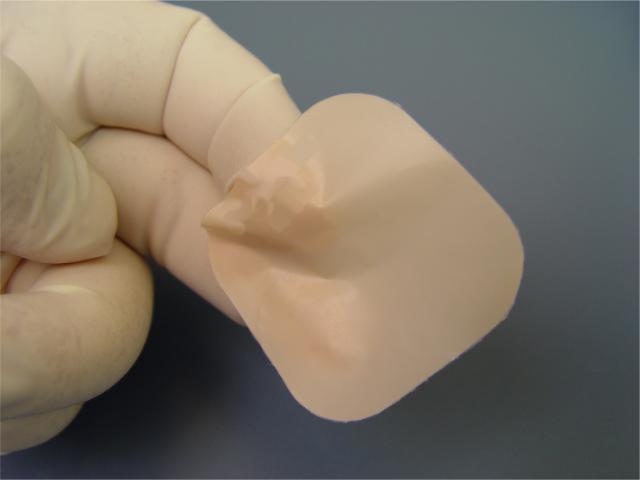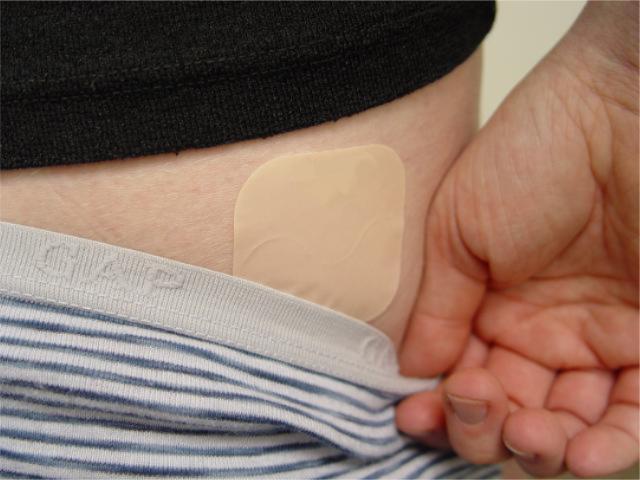|
Contraceptive Patch |
 The contraceptive patch is a soft, flexible, thin plastic membrane that is
worn continuously for 3 weeks (3 weeks "on") and then left off for one week (1
week "off"). During the "off" week, the menstrual flow occurs. Each patch
lasts 1 week, so in a typical cycle, three patches are used, one after
another.
The contraceptive patch is a soft, flexible, thin plastic membrane that is
worn continuously for 3 weeks (3 weeks "on") and then left off for one week (1
week "off"). During the "off" week, the menstrual flow occurs. Each patch
lasts 1 week, so in a typical cycle, three patches are used, one after
another.The patch delivers 150 mcg of norelgestromin and 20 mcg of ethinyl estradiol each day. It's function is similar to that of OCPs, but in patch form.
It's primary advantages are two:
- It doesn't require the patient to remember to take her pill each day (preferably at the same time).
- The absorption of the medication is completely independent of the GI tract.
It's disadvantages include:
- The annoyance of having patch attached to the skin.
- Some individuals notice a skin irritation at the patch site.
- The patient still must remember to change the patch, but on a weekly basis.
The patch remains fairly securely attached to the skin, despite exposure to showering, bathing, athletics, and the normal wear and tear of life. The unanticipated detachment rate is about 2%.
The patch is highly effective at preventing pregnancy, with an overall 1% failure rate each year. The failure rate was higher among women weighing more than 198 pounds (90 kg), and less among women weighing less than that.
The patch should be applied to clean, dry skin (but not the breasts). No make-up, creams, lotions, powders or other topical products should be used in the area where the patch will be applied.
Subsequent patches should not be applied to exactly the same area, but can be right next to the area.
Starting the patch (2 methods)
- Most women find it easiest to use a "Sunday Start." The patch is applied on the first Sunday following the beginning of the menstrual flow. Use backup contraception during the first 7 days of wearing the patch for the first time. After that, no additional backup is necessary.
- Others will start the patch on the first day of the menstrual flow, whenever it occurs. Using this method, no backup contraception is necessary.
Changing from OCPs to the patch (2 methods)
- At the normal time for starting a new pack of pills, apply the patch. Use backup contraception for the first 7 days
- Apply the patch at the onset of the OCP-induced menstrual flow. No backup contraception is needed.
Starting the patch after a 1st trimester miscarriage
Apply the patch within 5 days of the miscarriage (spontaneous abortion or
induced abortion). No backup contraception is needed.
Starting the patch after a 2nd or 3rd trimester delivery
Apply the patch 4 weeks after delivery (for those not breastfeeding).
Breastfeeding and the patch
The patch manufacturer recommends that the patch not be used while
breastfeeding, based on absence of scientific studies examining the effect of
these hormones on the newborn.
Many physicians, however, routinely use oral contraceptive pills in breastfeeding women, and the American Academy of Pediatricians has declared breastfeeding and the concurrent use of oral contraceptive pills to be compatible. It is unlikely that the patch's hormonal properties are so much different from the OCPs properties as to place it in a different category.

